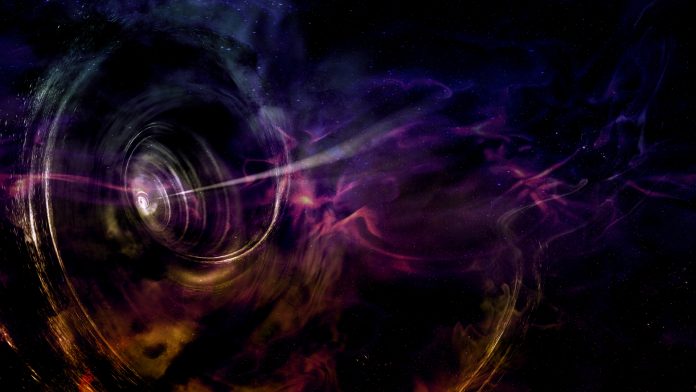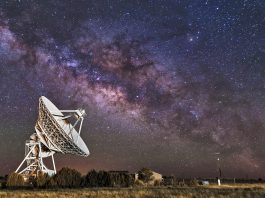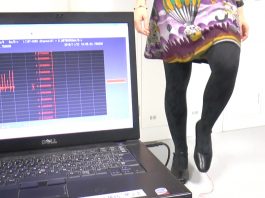Researchers at the University of Oslo have developed the theory that during the Devonian period, the Earth’s magnetic field was incredibly weak, which may have affected life on the planet.
The Devonian period, 420 to 360 million years ago, is surrounded by scientific mysteries. One of the most perplexing of these questions is why rocks from this epoch do not have visible traces from the Earth’s magnetic field. Ever since this abnormality was first observed, scientists have theorised that this is because the rocks lost their ‘magnetic memory’, but the scientific community did not have the answer as to why this could be.
Analysing the Devonian period
“From many studies it seems that Earth’s magnetic field was really weak at this time. And that this is the reason why the rocks don’t have these traces,” said paleomagnetist Annique van der Boon from the Centre for Earth Evolution and Dynamics at University of Oslo (UiO).
The Earth’s magnetic field is fundamental in our everyday lives, protecting the atmosphere and protecting us from solar storms that comprise charged particles that are harmful to modern technology.
In early 2020, Van der Boon was in northern Canada conducting fieldwork and collecting Devonian rocks; her objective was to look into how often the magnetic north and south poles flipped during this time.
Van der Boon reflected on this experience: “As we started to examine these rocks in the lab, it became clear to us that our results were very difficult to interpret. As I started writing up my research, I saw that many other scientists have also had a lot of trouble explaining their paleomagnetic data from the Devonian. As I read more papers, it gradually became clear to me that even though our rocks were nicely preserved, it was really hard to get reliable paleomagnetic data from them. What if this was because the magnetic field was too weak to affect them?”
“All the paleomagnetic data from the Devonian is very problematic. Scientists have suggested that rocks from this time period might have been heated when continents collided. This is something that will reset the magnetic memory,” she added.
Assessing the historic weakness of the Earth’s magnetic field
Prior investigations have indicated that Earth’s magnetic field was very weak in this period. However, now, Van der Boon’s assessment of Devonian paleomagnetic data determines that this explains the lack of reliable data, hindering the understanding of how continental plates have moved through time.
In her research, she demonstrates that the rocks that should have a good memory of Earth’s magnetic field still produce perplexing results. “Now we are trying to understand when the field weakened, and how long it was weak for”, explained Van Der Boon.
There are further studies that conform to the theory of a weak magnetic field during the Devonian period: “During the Devonian we saw the emergence of plants. A different study shows that these plants were damaged by UV-B-radiation at the end of the Devonian. This fits with the idea of a weak magnetic field.”
“We know very little about the Earth’s magnetic field over long timescales and why it behaves the way it does,” said Van der Boon.
“Rocks can remember the earth’s magnetic field from the time the rocks formed. Magnetic minerals inside rocks align themselves to the magnetic field,” she added.
Scientists can study rocks that are millions or even billions of years old to discover more about Earth’s magnetic field at that time. “This can give us information on the position of continental plates in the past, but it also tells us something about the very deep inner workings of the earth, as the magnetic field is formed by moving liquid iron in the Earth’s outer core,” explained Van der Boon.
Questions to explore going forward
Van der Boon’s study has unearthed significant information but has also raised more questions. It has already been established that the Earth’s magnetic field in the Devonian era was incredibly weak. Why was it so weak, and how did this impact the development of life on Earth? Going forward, these are the questions Van der Boon wishes to investigate.
“The magnetic field extends out into space. The stronger the magnetic field, the further it extends into space, and the better it protects us from harmful radiation coming from our sun. The place where the magnetic field and the solar wind balance each other out is called the magnetopause. By examining rocks we can get a better understanding of how well the magnetic field protected life on Earth.
“So as you can see it is important for us to have the nice and strong magnetic field that we have today. If the magnetic field would change and weaken to the strength that we saw during the Devonian we would experience some issues with our satellites.
“This being said, we do have a really strong field today, so it can easily become a bit weaker and we would still be okay,” she explained.
Despite this, Van der Boon is certain that it is necessary to attain a greater understanding of the Earth’s magnetic field.
“Throughout human history, Earth’s magnetic field has been strong and stable, but we are starting to understand that this was not always the case. Our research shows that when we look back in time, Earth’s magnetic field behaved very differently from today. This new research can help us understand how and when Earth’s inner and outer core have formed, which in turn can be used to improve computer models that can be used to predict Earth’s magnetic field,” concluded Van der Boon.









